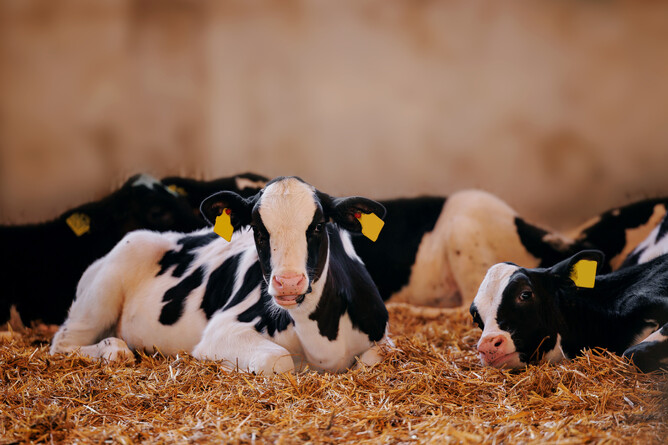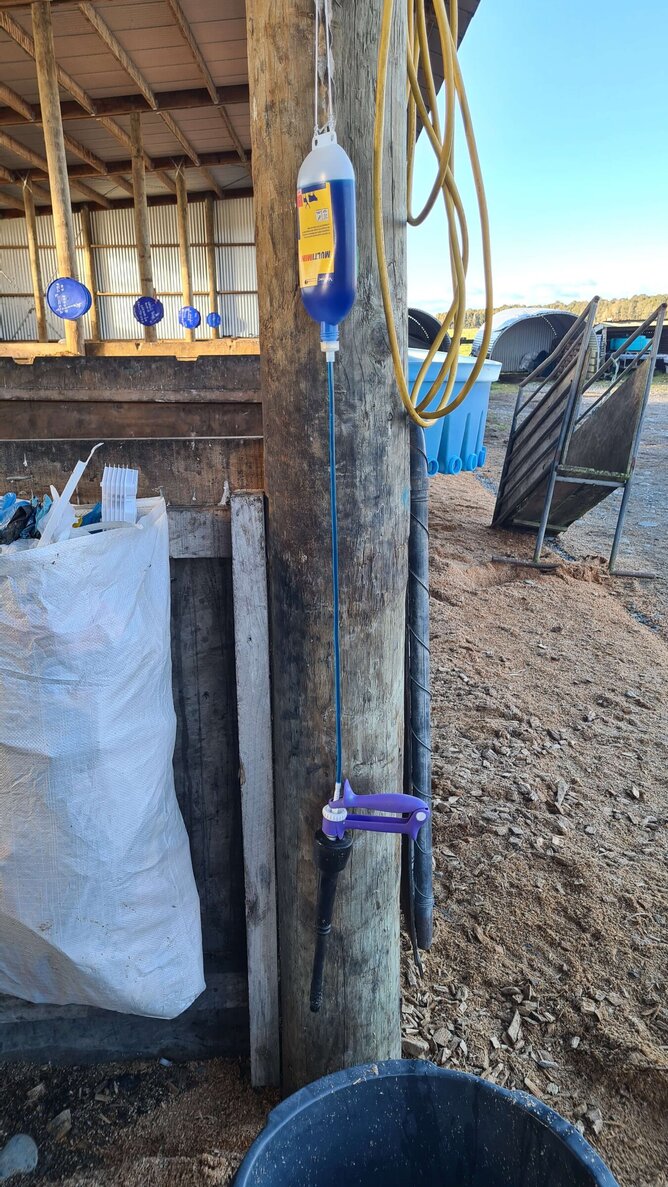A good setup is vital to giving your calves the best start in life.
Before we know it, the first calves will be dropping. Ensure you set aside a couple of days to get the calf shed prepared, so it isn’t a last-minute scramble.
Make sure all team members on-farm (experienced and new) are aware of your farm's protocols. For example, recording of cows and tagging calves, collecting calves, spraying navels, colostrum management.
New bedding
Calf sheds need to be emptied of bedding from the previous season, walls and flooring disinfected and new bedding put in. If the bedding has been stored outside, ensure it has enough time to dry out before the calves are due to go into the pens.
Separate hospital pen
This should have its own feeding equipment, disinfection point and, ideally, be in a separate shed or shelter. These calves should be fed last to reduce the risk of spreading disease.
Hygiene
Spray out pens regularly (bedding and walls). Virkon or Vetsan are great options that can be used while calves are in the pens.
Set up disinfection points with a foot bath and/or spray pump. All team members need to disinfect before entering and exiting that shed. Do not let people outside the farm into any shed unless they have cleaned and disinfected themselves beforehand.
Equipment
Calf feeders and buckets – have these have been cleaned and maintenance checked after coming out of storage?
Calf trailer – are the wheels pumped up? Is the cage clean? Are there any loose or sharp bits that could injure calves?
Pens
Each pen is required to have a clean water source (including bobby and hospital pens).
Replacement calves should have access to straw/hay and meal from the beginning.
There should be solid walls between pens to minimise the spread of disease.
Maintenance
Check lighting in calf shed.
Are all the gates working? Latches?
Water reticulation?
Iodine
It is recommended to spray calf navels before they go into the trailer, then again when they go into the shed. Have an iodine bottle in each location as a good reminder for everyone on the team.
Multimin
This is a great immune booster for calves within the first 24 hours. It has been shown that Multimin given at birth reduces scours, pneumonia, and increases survival rates. It is easy to incorporate this injection into your calf rearing routine. The dose rate is 1ml/50kg (about 0.8ml per calf for a 40kg calf).
Tip: Old inflations make great protection sleeves for your Multimin gun and needle. This trick keeps the needle clean and reduces the risk of accidental self injection.
Checklist
General pen setup:
Meal and hay feeders
Water troughs
Disinfectant (recommended products are Virkon or VetSan)
Notebook or whiteboard and pens for noting down sick calves and treatments.
Feeding equipment:
Calf feeders and spare teats
Tube feeder - the Antahi feeder is a great addition to your calf kit
Bottle feeder
Buckets with lids.
Tagging:
Ear tags or necklaces for calf identification
DNA sample kits.
Animal health products:
Iodine spray bottle (x2 – one for the calf trailer and one for the shed)
Multimin, injector gun and needles
Drugs – Bovipen (antibiotic), Engemycin (antibiotic), Metacam (anti-inflammatory)
Syringes - 5ml and 12ml syringes are the perfect size for calf injections
Needles - the green, 18g ones
Electrolytes
Thermometer
Survival blanket for those calves coming in wet/cold.


